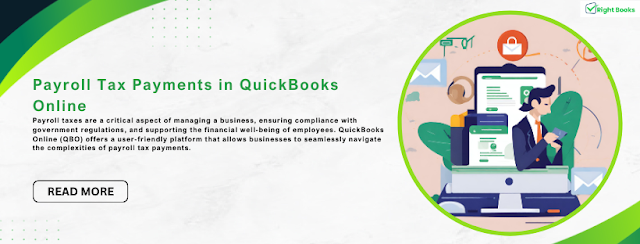Payroll Tax Payments in QuickBooks Online
Introduction:
Payroll taxes are a critical aspect of managing a business, ensuring compliance with government regulations, and supporting the financial well-being of employees. QuickBooks Online (QBO) offers a user-friendly platform that allows businesses to seamlessly navigate the complexities of payroll tax payments. In this comprehensive guide, we will delve into the step-by-step process of paying payroll taxes in QuickBooks Online, providing detailed explanations and tips to streamline your financial workflows.
I. Setting Up Payroll Tax Accounts:
Before initiating payroll tax payments in QuickBooks Online, it is essential to set up the necessary tax accounts. Navigate to the Payroll Center and select the 'Taxes' tab. Here, you can add and customize tax accounts according to your business's specific requirements. Ensure accuracy in the setup, as this information will be crucial for precise tax calculations.
II. Verify Employee Information:
To avoid discrepancies in payroll tax calculations, it is crucial to verify and maintain accurate employee information in QuickBooks Online. Regularly update employee details, including tax exemptions, filing status, and other relevant information, to ensure precise tax withholding.
III. Run Payroll and Calculate Taxes:
Once the employee information is up to date, run payroll in QuickBooks Online. The platform will automatically calculate payroll taxes based on the configured tax accounts and employee details. Review the calculated amounts to ensure accuracy before proceeding to the next step.
IV. Preview Payroll Tax Liabilities:
Before making any payments, it is advisable to preview your payroll tax liabilities in QuickBooks Online. This step allows you to review the breakdown of taxes owed, ensuring that all relevant payroll taxes are accounted for. QuickBooks provides detailed reports summarizing federal, state, and local tax liabilities.
V. Schedule Payments:
QuickBooks Online allows businesses to schedule payroll tax payments in advance, helping to streamline financial planning. Within the Payroll Center, navigate to the 'Scheduled Payments' tab, where you can set the payment dates for federal and state taxes. This feature is particularly beneficial for businesses looking to maintain financial discipline and avoid late payment penalties.
VI. Electronic Federal Tax Payment System (EFTPS):
For federal tax payments, QuickBooks Online integrates seamlessly with the Electronic Federal Tax Payment System (EFTPS). Set up your EFTPS account within QuickBooks to authorize electronic payments directly from the platform. This eliminates the need for manual intervention and reduces the risk of errors associated with traditional payment methods.
VII. State E-Pay:
Similarly, many states offer electronic payment options for state payroll taxes. QuickBooks Online provides a convenient feature known as State E-Pay, allowing businesses to make state tax payments electronically. Link your state tax agency information within QuickBooks to facilitate seamless and efficient payments.
VIII. Payment Confirmation and Record-Keeping:
After making payroll tax payments through QuickBooks Online, it is crucial to verify and retain payment confirmations. QuickBooks automatically generates payment confirmations, which serve as essential documentation for record-keeping and auditing purposes. Store these confirmations securely to ensure compliance with tax regulations.
IX. Reminders and Notifications:
QuickBooks Online includes a robust reminder system to help businesses stay on top of their financial obligations. Utilize the platform's notification features to receive alerts about upcoming payroll tax payments, ensuring timely compliance and avoiding penalties.
X. Periodic Reconciliation:
To maintain financial accuracy and compliance, perform periodic reconciliations of your payroll tax payments in QuickBooks Online. Compare your records with bank statements and tax agency reports to identify any discrepancies promptly. Addressing issues promptly ensures accurate financial reporting and helps prevent potential audit concerns.
READ MORE :- Quickbooks Error 12152



Comments
Post a Comment